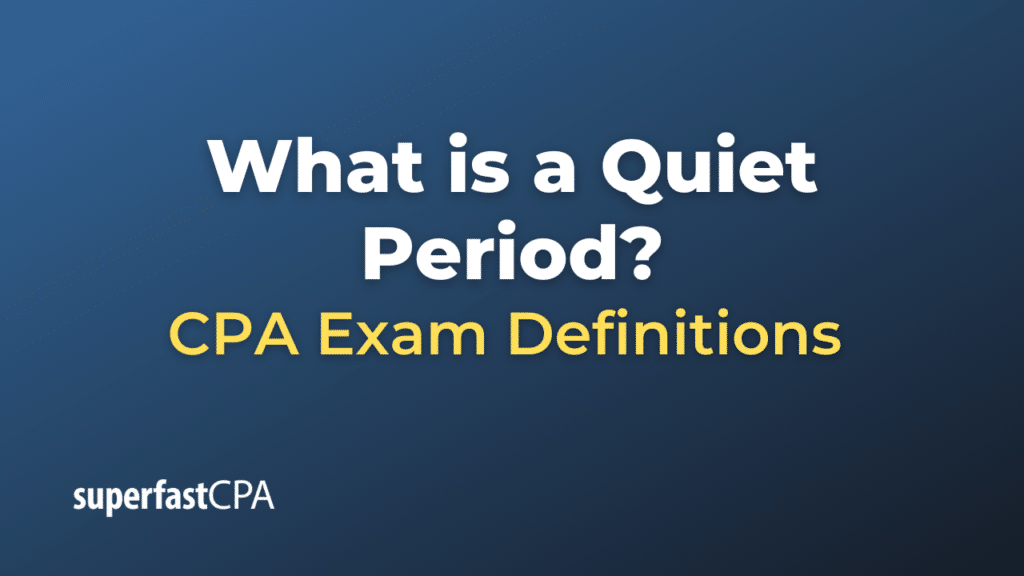Quiet Period
A “quiet period” refers to a specific span of time during which a company’s management and certain insiders are restricted from making any public statements or comments about the company, particularly with regard to its financial performance. The quiet period is imposed by regulatory authorities, primarily to prevent any potential manipulation of stock prices and to ensure that all investors have equal access to information.
There are two common scenarios where the term “quiet period” is typically used:
- IPO Quiet Period:
- Before an Initial Public Offering (IPO), a company and its underwriters observe a quiet period. This starts when the company files its preliminary prospectus with the SEC and lasts until a few days (typically 40 days) after the stock begins trading on a public exchange. During this time, the company’s representatives are limited in what they can say to the public and the media to avoid hyping the stock or influencing its initial trading price.
- Quarterly Quiet Period:
- Some publicly-traded companies observe a quiet period in the weeks leading up to the release of their quarterly earnings reports. While not mandated by the SEC, this self-imposed quiet period is a time when company executives refrain from speaking to analysts, investors, or the media about anything that could affect stock prices. The idea is to prevent the accidental release or misinterpretation of material information before it’s officially reported.
It’s worth noting that the U.S. Securities and Exchange Commission (SEC) regulations, particularly Regulation Fair Disclosure (Reg FD), seek to ensure that all investors receive material company information at the same time. The quiet period is one tool to help maintain that level playing field.
Example of a Quiet Period
Let’s look at a hypothetical example of an IPO quiet period:
XYZ Robotics Inc., a leading manufacturer of industrial robots, has decided to go public. They’ve seen substantial growth over the past five years and believe that an Initial Public Offering (IPO) will provide them with the capital needed to expand even further.
Timeline:
- January 10: XYZ Robotics files its preliminary prospectus (also known as a “red herring”) with the U.S. Securities and Exchange Commission (SEC). This document provides potential investors with details about the company’s operations, financial health, and risks associated with investing in the company.
- January 10 to March 1 (IPO Quiet Period Begins): From the day the preliminary prospectus is filed, XYZ Robotics enters its quiet period. During this time, company executives, representatives, and the underwriters are prohibited from making any public statements or providing additional information about the company that isn’t already in the filed prospectus. This ensures that all investors have the same information about the company when making their investment decisions.
- March 1: XYZ Robotics’ shares are officially listed and begin trading on the stock exchange. Investors can now buy and sell shares of XYZ Robotics on the open market.
- April 10 (End of the IPO Quiet Period): 40 days after the shares started trading, the quiet period officially ends. Starting from this day, the company’s executives and underwriters can once again speak publicly about the company and participate in promotional events, interviews, or conferences.
During the quiet period, suppose a journalist tried to get a comment from XYZ Robotics’ CEO about a rumored new product launch. The CEO would decline to comment, citing the quiet period restrictions.
It’s important to note that not adhering to the quiet period can result in regulatory penalties, potential lawsuits, and mistrust among investors. As such, companies are generally very careful during this sensitive time.













